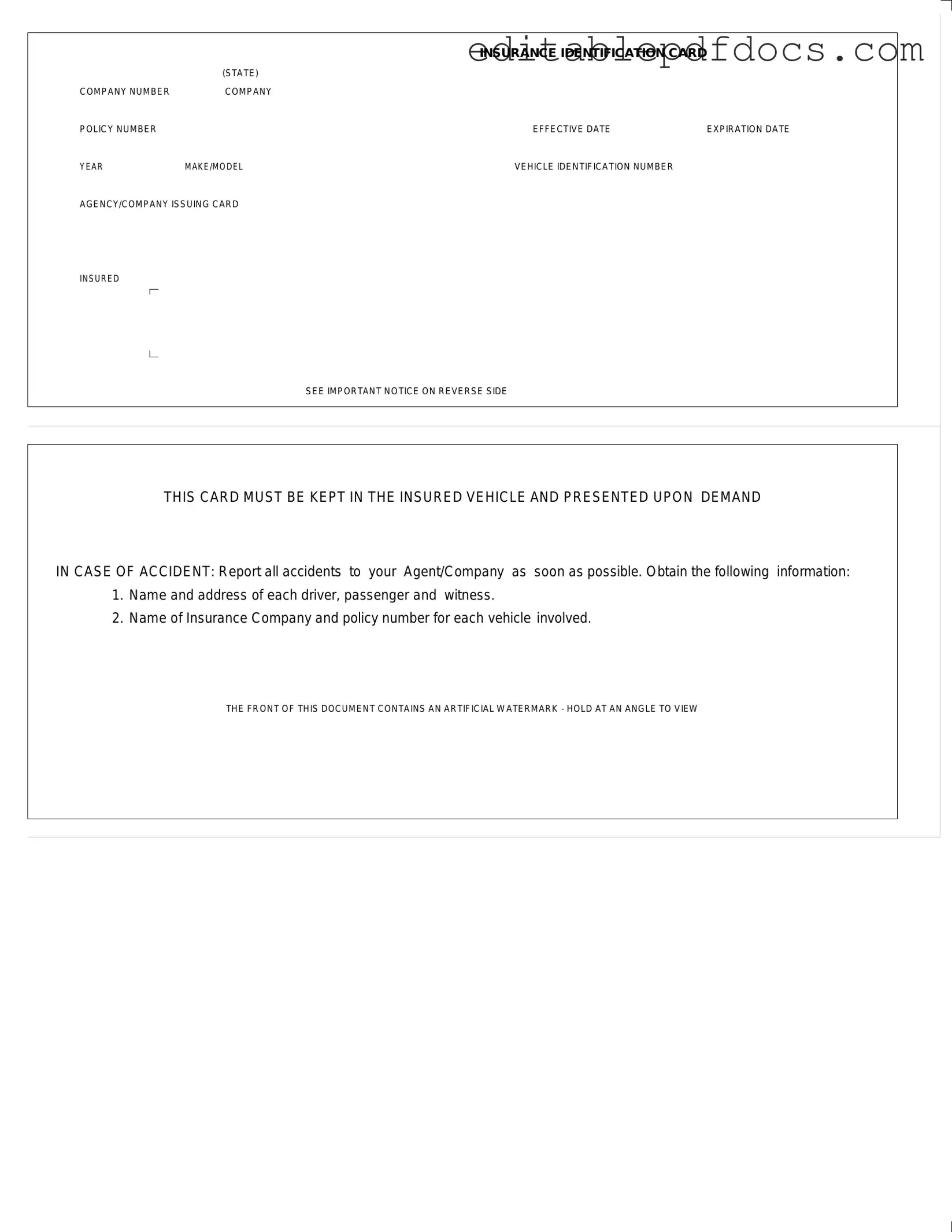When navigating the world of auto insurance, one crucial document stands out: the Auto Insurance Card. This card serves as proof of insurance and contains essential details that both drivers and law enforcement need to verify coverage. Prominently displayed on the front of the card are the insurance identification number, the policy number, and the effective and expiration dates, all of which confirm that the vehicle is insured for a specified period. Additionally, the card lists the make and model of the vehicle, along with the Vehicle Identification Number (VIN), ensuring that the information is tailored to the specific car being driven. Issued by the insurance agency or company, this card must be kept in the vehicle at all times and presented upon request in the event of an accident. It is important to note that in case of an incident, drivers should promptly report the accident to their insurance agent or company, collecting necessary details such as the names and addresses of all parties involved, including drivers, passengers, and witnesses. Furthermore, the card features an artificial watermark for added security, which can be viewed by tilting the card at an angle. This multifaceted document not only provides peace of mind but also plays a pivotal role in ensuring compliance with state regulations.
